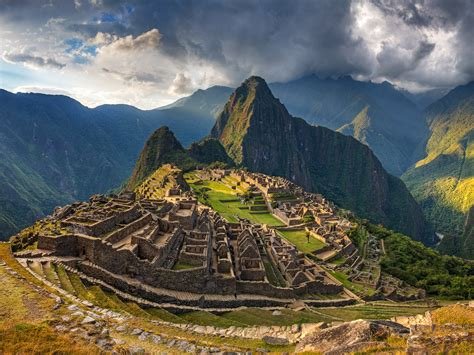Most Beautiful Cities in South America to Discover
South America is home to some of the most beautiful and vibrant cities in the world, each with its own unique blend of history, culture, and natural beauty. From the bustling streets of Rio de Janeiro to the colorful hills of Valparaiso, the continent offers a diverse array of destinations waiting to be explored. In this blog post, we will take a closer look at some of the most stunning cities in South America, including the vibrant gem that is Rio de Janeiro, the European elegance of Buenos Aires, the historical treasure of Cartagena, the gateway to Machu Picchu in Cusco, the colorful bohemian haven of Valparaiso, and the cultural melting pot of Salvador. Whether you’re a history buff, a foodie, a nature lover, or just someone seeking a new adventure, these cities have something to offer for everyone. So, pack your bags and get ready to discover the most beautiful cities South America has to offer.
Rio de Janeiro: A Vibrant Gem
Rio de Janeiro, located on the southeastern coast of Brazil, is a vibrant gem that attracts millions of visitors each year with its stunning natural beauty, lively culture, and diverse attractions. The city is famous for its iconic landmarks such as the Christ the Redeemer statue, Sugarloaf Mountain, and Copacabana Beach, but it offers so much more than just postcard-worthy sights.
One of the most captivating aspects of Rio de Janeiro is its vibrant music and dance scene, which is deeply rooted in the city’s rich cultural heritage. From the infectious rhythms of samba and bossa nova to the exhilarating energy of Carnival, music and dance are integral to the soul of Rio. Visitors can experience the pulsating beats and colorful costumes at samba clubs, live music venues, and during spontaneous street performances throughout the city.
Beyond its lively entertainment scene, Rio de Janeiro is also a melting pot of diverse influences, blending indigenous, African, and European cultures into a rich tapestry of traditions and customs. This cultural fusion is evident in the city’s food, art, and architecture, creating a vibrant and dynamic atmosphere that is both exhilarating and enchanting.
Whether you’re exploring the lush urban forests of Tijuca National Park, soaking up the sun on the city’s famous beaches, or immersing yourself in the rhythm and soul of Rio’s neighborhoods, it’s clear that this vibrant gem has an irresistible allure that captivates all who visit.
Buenos Aires: The Paris of South America
Known for its European flair, Buenos Aires is often referred to as the Paris of South America. The city’s architecture, culture, and cuisine all reflect a strong European influence, making it a unique and vibrant destination for travelers.
One of the most iconic landmarks in Buenos Aires is the Obelisco, a towering monument that stands at the heart of the city. This symbol of Argentina’s capital city is surrounded by wide avenues, elegant boulevards, and beautiful parks, which add to the city’s unmistakable Parisian charm.
Visitors to Buenos Aires can explore the city’s many neighborhoods, each with its own distinct personality and appeal. From the colorful streets of La Boca to the upscale shops and cafes of Palermo, there is no shortage of things to see and do in this dynamic city.
When it comes to dining, Buenos Aires offers a rich culinary scene that is sure to satisfy any palate. From traditional Argentinian steakhouses, known as parrillas, to charming sidewalk cafes serving up delicious pastries and coffee, the city’s food scene is a true reflection of its diverse and multicultural identity.
Cartagena: A Historical Caribbean Treasure
Cartagena is a historical city located on the Caribbean coast of Colombia. With its vibrant colors, colonial architecture, and rich history, Cartagena is truly a treasure for visitors to explore.
Walking through the winding cobblestone streets of the Old Town, visitors are transported back in time to the days of Spanish colonial rule. The city’s fortifications are a testament to its strategic importance in the Caribbean region, and the historical significance of Cartagena is evident in every corner of the city.
One of the most iconic sites in Cartagena is the Castillo San Felipe de Barajas, a fortress built by the Spanish in the 17th century to protect the city from pirate attacks. The views from the top of the fortress are breathtaking, and visitors can gain a deeper appreciation for the city’s historical importance.
But Cartagena is not just a city frozen in time – it is also a vibrant, modern destination with a rich culture and lively atmosphere. From the bustling street markets to the lively music that fills the air, Cartagena is a Caribbean treasure that continues to dazzle visitors from around the world.
Cusco: The Gateway to Machu Picchu
Cusco, located in the Andes mountains of Peru, is a city with a rich history and culture that serves as the gateway to the world-famous Machu Picchu. As one of the most important cities of the Inca Empire, Cusco is dotted with ancient ruins, impressive architecture, and a vibrant atmosphere that attracts travelers from all over the world.
One of the highlights of Cusco is its well-preserved historic center, which features charming cobblestone streets, colonial buildings, and stunning churches. Visitors can explore the Plaza de Armas, the heart of the city, and marvel at the blend of Inca and Spanish influences that are evident in the architecture.
Aside from its historical significance, Cusco is also a hub for adventure seekers and outdoor enthusiasts. The surrounding mountains and valleys offer a wide range of activities such as trekking, mountain biking, and zip-lining, providing opportunities for unforgettable experiences in the spectacular Andean landscape.
For those looking to make the pilgrimage to Machu Picchu, Cusco is the starting point for the iconic train journey to the ancient citadel. Travelers can choose to hike the famous Inca Trail or opt for a scenic train ride through the stunning countryside, both offering breathtaking views and a sense of anticipation for the awe-inspiring archaeological wonder that awaits at the end of the journey.
Valparaiso: A Colorful Bohemian Haven
Valparaiso is a colorful coastal city in Chile, known for its bohemian atmosphere and vibrant street art. The city is a UNESCO World Heritage Site, attracting visitors from all over the world to experience its unique charm and character.
One of the most striking features of Valparaiso is its colorful houses that adorn the hillsides, creating a picturesque and colorful landscape that is a delight to explore. Each of these houses is painted in bright, vivid colors, giving the city a vibrant and lively feel that is unlike anywhere else.
Another aspect that makes Valparaiso a bohemian haven is its thriving art scene. The city is home to numerous art galleries, studios, and street art installations that showcase the talent and creativity of local and international artists. Everywhere you turn, you are greeted with stunning murals and urban art that add to the city’s bohemian and eclectic vibe.
Overall, Valparaiso is a truly colorful bohemian haven that captivates visitors with its unique charm, lively atmosphere, and rich artistic heritage. It is a must-visit destination for anyone looking to experience the vibrant and bohemian spirit of Chile.
Salvador: A Cultural Melting Pot
Salvador, the capital of the Brazilian state of Bahia, is a cultural melting pot with a rich history and diverse population. The city’s roots can be traced back to the 16th century when it was a major port and the first colonial capital of Brazil. Over the centuries, Salvador has evolved into a vibrant and dynamic city known for its Afro-Brazilian culture, music, and cuisine.
The African influence in Salvador is evident in its music and dance, with the city being considered the birthplace of the samba and capoeira. Every year, millions of people flock to Salvador to celebrate Carnaval, the largest street party in the world, where the streets come alive with music, dance, and colorful costumes.
Salvador’s historic center, Pelourinho, is a UNESCO World Heritage Site and is home to beautiful colonial architecture, vibrant markets, and lively squares. Visitors can explore the city’s rich history and culture by visiting museums, churches, and cultural centers that showcase the city’s diversity and heritage.
With its stunning coastline, delicious cuisine, and lively atmosphere, Salvador is a destination that offers visitors a truly unique and immersive cultural experience. Whether you’re exploring the city’s historic landmarks, enjoying the rhythms of Afro-Brazilian music, or simply soaking up the vibrant atmosphere, Salvador is a city that will leave a lasting impression.
Frequently Asked Questions
What makes Rio de Janeiro a vibrant gem?
Rio de Janeiro is known for its stunning beaches, beautiful landscapes, and vibrant culture, with iconic landmarks such as Christ the Redeemer and Sugarloaf Mountain.
Why is Buenos Aires called the Paris of South America?
Buenos Aires is often compared to Paris due to its European-style architecture, rich cultural scene, and cosmopolitan atmosphere.
What makes Cartagena a historical Caribbean treasure?
Cartagena is a UNESCO World Heritage site with its well-preserved colonial architecture, colorful streets, and historical landmarks that date back to the Spanish colonial era.
Why is Cusco known as the gateway to Machu Picchu?
Cusco is the starting point for most travelers visiting Machu Picchu, and it is a city steeped in history with impressive Incan ruins and a vibrant indigenous culture.
What makes Valparaiso a colorful bohemian haven?
Valparaiso is known for its artistic and bohemian vibe, with its colorful murals, quirky architecture, and stunning views of the Pacific Ocean.
Why is Salvador considered a cultural melting pot?
Salvador is a city with a rich Afro-Brazilian heritage, known for its music, dance, and religious traditions, making it a vibrant and diverse cultural hub.






